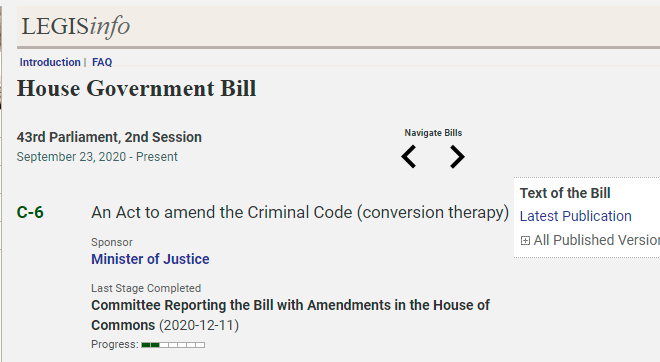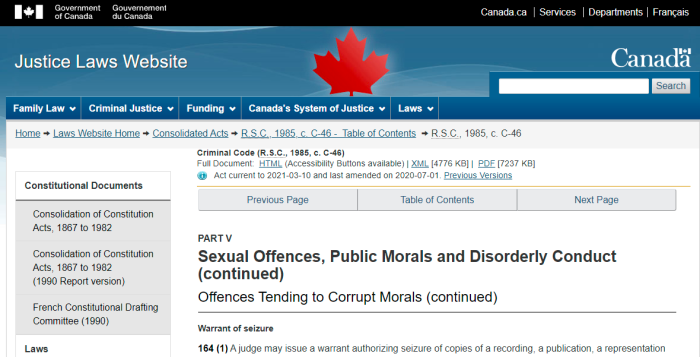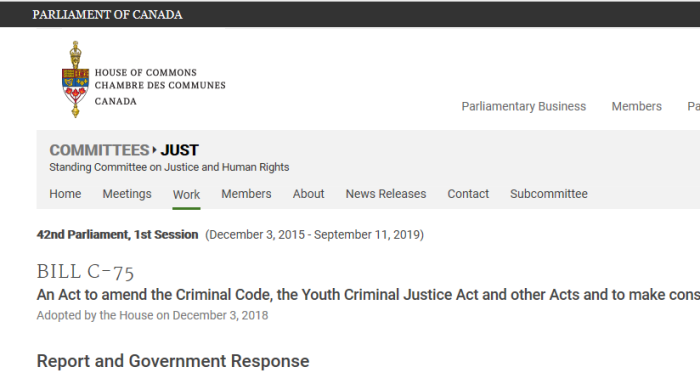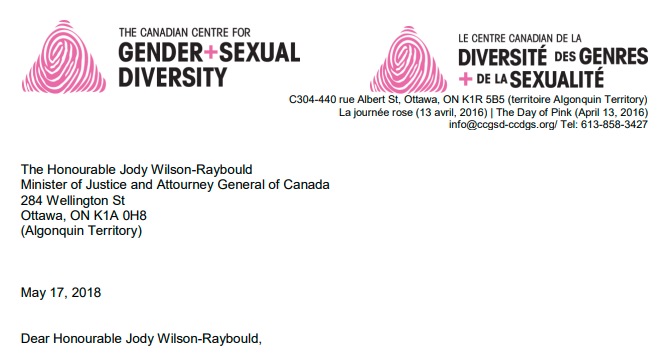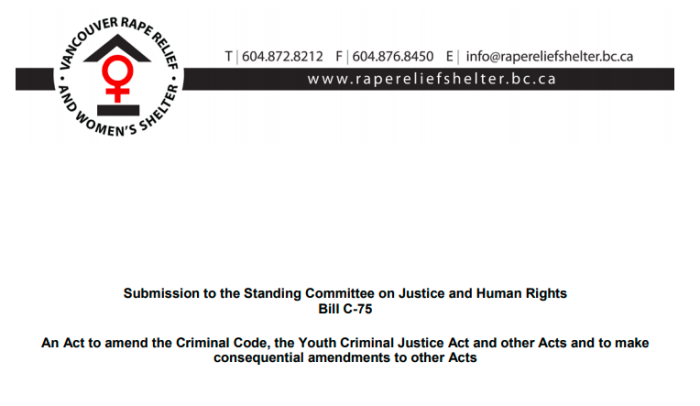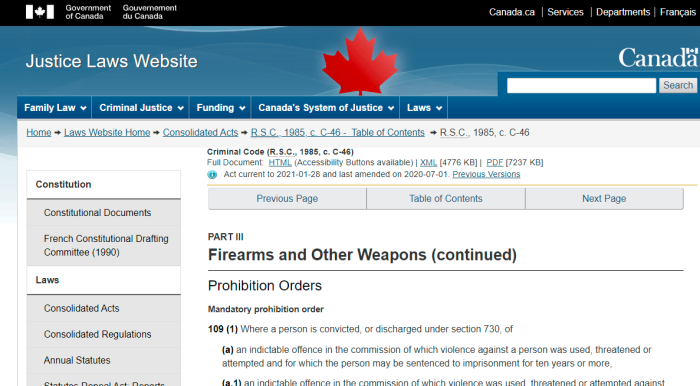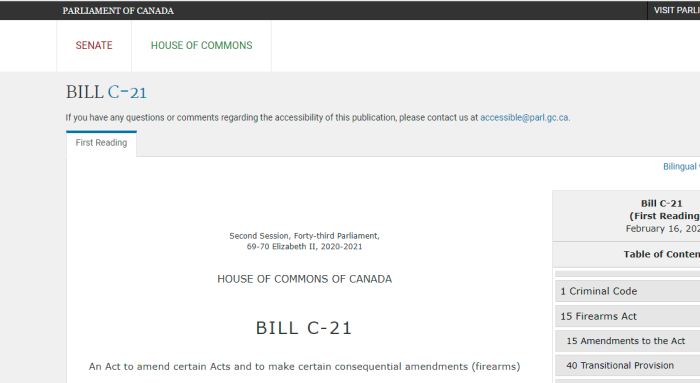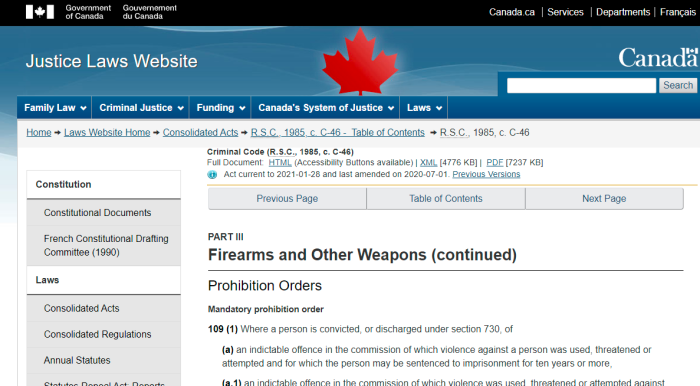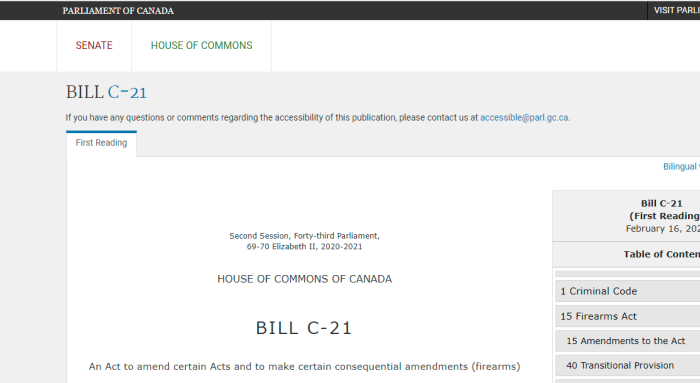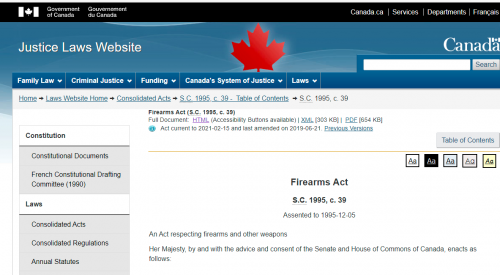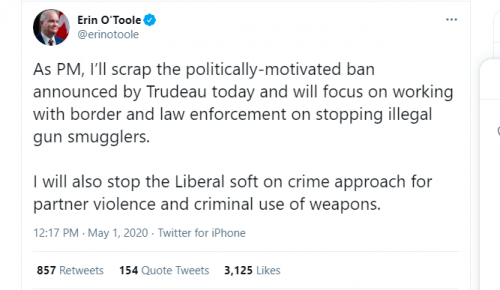
This Bill redefines replica firearms, and brings Red Flag and Yellow Flag Laws onto Canadian gun owners, regardless of how law abiding these people may be. It also makes changes to IRPA, the Immigration and Refugee Protection Act.
Immigration & Refugee Protection Act
Canada Criminal Code
Text Of Bill C-21
1. Gun Rights Are Essential, Need Protecting
The freedoms of a society can be gauged by the laws and attitudes they have towards firearms. Governments, and other groups can push around an unarmed population much easier than those who can defend themselves. It’s not conspiratorial to wonder about those pushing for gun control. In fact, healthy skepticism is needed for a society to function.
2. Canada Immigration & Refugee Protection Act
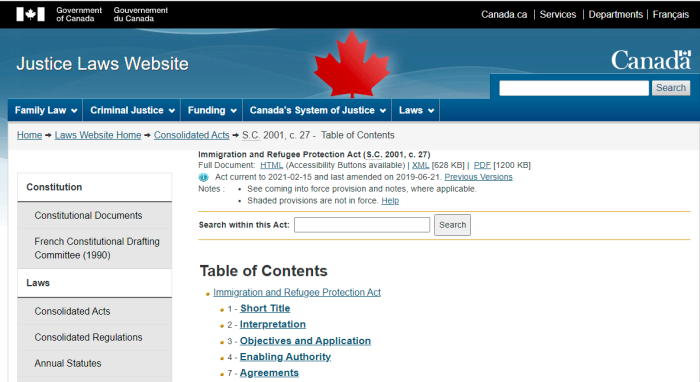
Minister of Public Safety and Emergency Preparedness
.
(2) The Minister of Public Safety and Emergency Preparedness is responsible for the administration of this Act as it relates to
(a) examinations at ports of entry;
(b) the enforcement of this Act, including arrest, detention and removal;
(c) the establishment of policies respecting the enforcement of this Act and inadmissibility on grounds of security, organized criminality or violating human or international rights; or
(d) declarations referred to in section 42.1.
Criminality
.
36(2) A foreign national is inadmissible on grounds of criminality for
.
(a) having been convicted in Canada of an offence under an Act of Parliament punishable by way of indictment, or of two offences under any Act of Parliament not arising out of a single occurrence;
.
(b) having been convicted outside Canada of an offence that, if committed in Canada, would constitute an indictable offence under an Act of Parliament, or of two offences not arising out of a single occurrence that, if committed in Canada, would constitute offences under an Act of Parliament;
.
(c) committing an act outside Canada that is an offence in the place where it was committed and that, if committed in Canada, would constitute an indictable offence under an Act of Parliament; or
.
(d) committing, on entering Canada, an offence under an Act of Parliament prescribed by regulations.
Bill C-21 would add Section 36(2.1) or “transborder criminality” onto this section. Presumably this refers to things like weapons smuggling, but a more precise definition would be appreciation
[SERIOUS CRIMINALITY]
36(3) The following provisions govern subsections (1) and (2):
.
(a) an offence that may be prosecuted either summarily or by way of indictment is deemed to be an indictable offence, even if it has been prosecuted summarily;
.
(b) inadmissibility under subsections (1) and (2) may not be based on a conviction in respect of which a record suspension has been ordered and has not been revoked or ceased to have effect under the Criminal Records Act, or in respect of which there has been a final determination of an acquittal;
.
(c) the matters referred to in paragraphs (1)(b) and (c) and (2)(b) and (c) do not constitute inadmissibility in respect of a permanent resident or foreign national who, after the prescribed period, satisfies the Minister that they have been rehabilitated or who is a member of a prescribed class that is deemed to have been rehabilitated;
.
(d) a determination of whether a permanent resident has committed an act described in paragraph (1)(c) must be based on a balance of probabilities; and
.
(e) inadmissibility under subsections (1) and (2) may not be based on an offence
.
(i) designated as a contravention under the Contraventions Act,
.
(ii) for which the permanent resident or foreign national is found guilty under the Young Offenders Act, chapter Y-1 of the Revised Statutes of Canada, 1985, or
.
(iii) for which the permanent resident or foreign national received a youth sentence under the Youth Criminal Justice Act.
36(3)(b) is changed to include transborder criminality in grounds, if a person has been pardoned, or acquitted finally. Similarly, 36(3)(e) brings transborder criminality into consideration for young offenders. These are just a few quotes from IRPA, the Immigration & Refugee Protection Act.
3. Changes Bill C-21 Would Make To IRPA
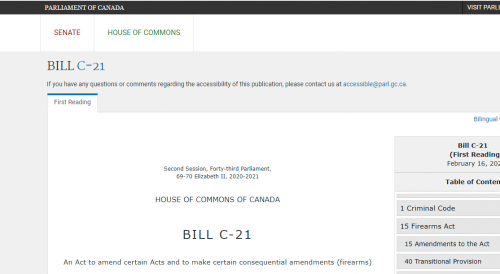
Immigration and Refugee Protection Act
44 Paragraph 4(2)(c) of the Immigration and Refugee Protection Act is replaced by the following:
(c) the establishment of policies respecting the enforcement of this Act and inadmissibility on grounds of security, organized criminality, violating human or international rights or transborder criminality; or
45 (1) Paragraphs 36(1)(a) to (c) of the French version of the Act are replaced by the following:
a) être déclaré coupable au Canada d’une infraction prévue sous le régime d’une loi fédérale punissable d’un emprisonnement maximal d’au moins dix ans ou d’une infraction prévue sous le régime d’une loi fédérale pour laquelle un emprisonnement de plus de six mois est infligé;
.
b) être déclaré coupable, à l’extérieur du Canada, d’une infraction qui, commise au Canada, constituerait une infraction sous le régime d’une loi fédérale punissable d’un emprisonnement maximal d’au moins dix ans;
.
c) commettre, à l’extérieur du Canada, une infraction qui, commise au Canada, constituerait une infraction sous le régime d’une loi fédérale punissable d’un emprisonnement maximal d’au moins dix ans.
(2) Paragraphs 36(2)(a) to (c) of the French version of the Act are replaced by the following:
a) être déclaré coupable au Canada d’une infraction prévue sous le régime d’une loi fédérale punissable par mise en accusation ou de deux infractions prévues sous le régime de toute loi fédérale qui ne découlent pas des mêmes faits;
.
b) être déclaré coupable, à l’extérieur du Canada, d’une infraction qui, commise au Canada, constituerait une infraction sous le régime d’une loi fédérale punissable par mise en accusation ou de deux infractions qui ne découlent pas des mêmes faits et qui, commises au Canada, constitueraient des infractions sous le régime de toute loi fédérale;
.
c) commettre, à l’extérieur du Canada, une infraction qui, commise au Canada, constituerait une infraction sous le régime d’une loi fédérale punissable par mise en accusation;
(3) Subsection 36(2) of the Act is amended by adding “or” at the end of paragraph (b), by striking out “or” at the end of paragraph (c) and by repealing paragraph (d).
(4) Section 36 of the Act is amended by adding the following after subsection (2):
Transborder criminality
(2.1) A foreign national is inadmissible on grounds of transborder criminality for committing, on entering Canada, a prescribed offence under an Act of Parliament.
(5) The portion of subsection 36(3) of the Act before paragraph (a) is replaced by the following:
Application
(3) The following provisions govern subsections (1) to (2.1):
(6) Paragraph 36(3)(b) of the English version of the Act is replaced by the following:
(b) inadmissibility under subsections (1) to (2.1) may not be based on a conviction in respect of which a record suspension has been ordered and has not been revoked or ceased to have effect under the Criminal Records Act, or in respect of which there has been a final determination of an acquittal;
(7) The portion of paragraph 36(3)(e) of the English version of the Act before subparagraph (i) is replaced by the following:
(e) inadmissibility under subsections (1) to (2.1) may not be based on an offence
46 Paragraph 37(1)(a) of the French version of the Act is replaced by the following:
a) être membre d’une organisation dont il y a des motifs raisonnables de croire qu’elle se livre ou s’est livrée à des activités faisant partie d’un plan d’activités criminelles organisées par plusieurs personnes agissant de concert en vue de la perpétration d’une infraction prévue sous le régime d’une loi fédérale punissable par mise en accusation ou de la perpétration, hors du Canada, d’une infraction qui, commise au Canada, constituerait une telle infraction, ou se livrer à des activités faisant partie d’un tel plan;
47 Paragraph 55(3)(b) of the Act is replaced by the following:
(b) has reasonable grounds to suspect that the permanent resident or the foreign national is inadmissible on grounds of security, violating human or international rights, serious criminality, criminality, transborder criminality or organized criminality.
48 Paragraph 58(1)(c) of the Act is replaced by the following:
(c) the Minister is taking necessary steps to inquire into a reasonable suspicion that they are inadmissible on grounds of security, violating human or international rights, serious criminality, criminality, transborder criminality or organized criminality;
49 Subsection 68(4) of the Act is replaced by the following:
Termination and cancellation
(4) If the Immigration Appeal Division has stayed a removal order against a permanent resident or a foreign national who was found inadmissible on grounds of serious criminality, criminality or transborder criminality, and they are convicted of another offence referred to in subsection 36(1), the stay is cancelled by operation of law and the appeal is terminated.
50 Paragraph 100(2)(b) of the French version of the Act is replaced by the following:
b) il l’estime nécessaire, afin qu’il soit statué sur une accusation pour une infraction prévue sous le régime d’une loi fédérale punissable d’un emprisonnement maximal d’au moins dix ans.
51 Paragraphs 101(2)(a) and (b) of the French version of the Act are replaced by the following:
a) une déclaration de culpabilité au Canada pour une infraction prévue sous le régime d’une loi fédérale punissable d’un emprisonnement maximal d’au moins dix ans;
b) une déclaration de culpabilité à l’extérieur du Canada pour une infraction qui, commise au Canada, constituerait une infraction sous le régime d’une loi fédérale punissable d’un emprisonnement maximal d’au moins dix ans.
52 Paragraph 103(1)(b) of the French version of the Act is replaced by the following:
b) il l’estime nécessaire, afin qu’il soit statué sur une accusation pour une infraction prévue sous le régime d’une loi fédérale punissable d’un emprisonnement maximal d’au moins dix ans.
53 Subsection 105(1) of the French version of the Act is replaced by the following:
Sursis
105 (1) La Section de la protection des réfugiés ou la Section d’appel des réfugiés sursoit à l’étude de l’affaire si la personne est visée par un arrêté introductif d’instance pris au titre de l’article 15 de la Loi sur l’extradition pour une infraction prévue sous le régime d’une loi fédérale punissable d’un emprisonnement d’une durée maximale égale ou supérieure à dix ans tant qu’il n’a pas été statué en dernier ressort sur la demande d’extradition.
54 Paragraph 112(3)(b) of the French version of the Act is replaced by the following:
b) il est interdit de territoire pour grande criminalité pour déclaration de culpabilité au Canada pour une infraction prévue sous le régime d’une loi fédérale punissable d’un emprisonnement maximal d’au moins dix ans ou pour toute déclaration de culpabilité à l’extérieur du Canada pour une infraction qui, commise au Canada, constituerait une infraction sous le régime d’une loi fédérale punissable d’un emprisonnement maximal d’au moins dix ans;
55 (1) Subparagraph 113(e)(i) of the Act is replaced by the following:
(i) an applicant who is determined to be inadmissible on grounds of serious criminality with respect to a conviction in Canada of an offence under an Act of Parliament punishable by a maximum term of imprisonment of at least 10 years for which a term of imprisonment of less than two years — or no term of imprisonment — was imposed, and
(2) Subparagraph 113(e)(ii) of the French version of the Act is replaced by the following:
(ii) celui qui est interdit de territoire pour grande criminalité pour déclaration de culpabilité à l’extérieur du Canada pour une infraction qui, commise au Canada, constituerait une infraction sous le régime d’une loi fédérale punissable d’un emprisonnement maximal d’au moins dix ans, sauf s’il a été conclu qu’il est visé à la section F de l’article premier de la Convention sur les réfugiés.
Immigration and Refugee Protection Regulations
58 The portion of section 19 of the Immigration and Refugee Protection Regulations before paragraph (a) is replaced by the following:
Transborder crime
19 For the purposes of subsection 36(2.1) of the Act, indictable offences under the following Acts of Parliament are prescribed:
It says that certain indictable offences under the following Acts are prescribed, but then it doesn’t list them. Is there an oversight here?
59 Paragraph 229(1)(d) of the Regulations is replaced by the following:
(d) a deportation order, if they are inadmissible under paragraph 36(2)(b) or (c) of the Act on grounds of criminality or under subsection 36(2.1) of the Act on grounds of transborder criminality;
60 Paragraph 230(3)(c) of the Regulations is replaced by the following:
(c) is inadmissible under subsection 36(1) of the Act on grounds of serious criminality, under subsection 36(2) of the Act on grounds of criminality or under subsection 36(2.1) of the Act on grounds of transborder criminality;
This Bill would add “transborder criminality” as a reason to prevent someone from entering Canada, to imprison, or to deport. While this sounds fine, some clarity would be appreciated.
4. IRPA Also Lets Inadmissibles In Legally
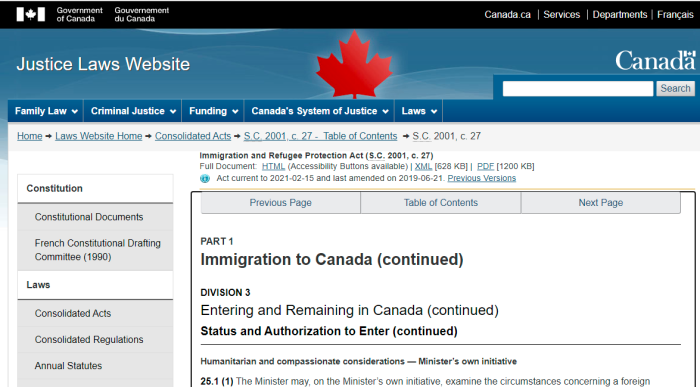
Temporary resident permit
.
24 (1) A foreign national who, in the opinion of an officer, is inadmissible or does not meet the requirements of this Act becomes a temporary resident if an officer is of the opinion that it is justified in the circumstances and issues a temporary resident permit, which may be cancelled at any time.
Public policy considerations
.
25.2 (1) The Minister may, in examining the circumstances concerning a foreign national who is inadmissible or who does not meet the requirements of this Act, grant that person permanent resident status or an exemption from any applicable criteria or obligations of this Act if the foreign national complies with any conditions imposed by the Minister and the Minister is of the opinion that it is justified by public policy considerations.
As addressed here, here, here and here, there are at least 2 provisions in IRPA that allow people who are otherwise inadmissible to be LEGALLY let it. This happens daily.
5. Confusion Around Sentencing Range
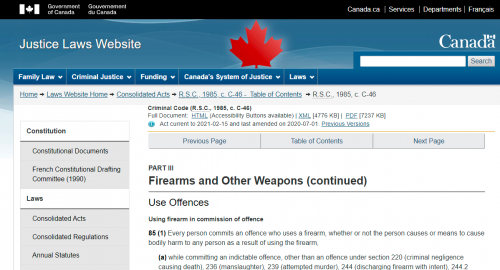
Bill C-21 includes increasing the range of sentences for several gun crimes from a 10 year maximum, to a 14 year maximum. This is one of the truly reasonable sections of the legislation.
Replacement of “10” and “ten” with “14”
14 The Act is amended by replacing “10” and “ten” with “14” in the following provisions:
(a) paragraph 95(2)(a);
(b) paragraph 96(2)(a);
(c) the portion of subsection 99(2) before paragraph (a) and subsection 99(3);
(d) the portion of subsection 100(2) before paragraph (a) and subsection 100(3); and
(e) the portion of subsection 103(2) before paragraph (a) and subsection 103(2.1).
That being said, Bill C-22 (another piece before Parliament), seeks to eliminate the mandatory minimum sentences on many serious gun crimes. Overall, these are very strange, and somewhat conflicting portions.
Like this:
Like Loading...
